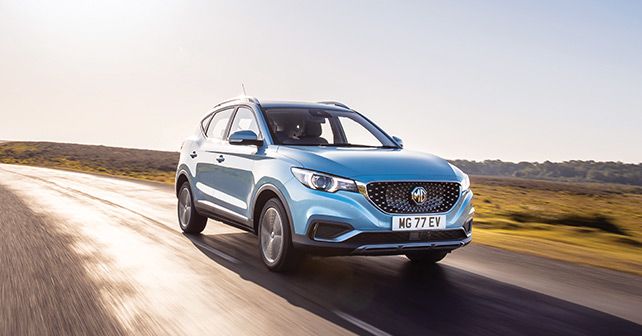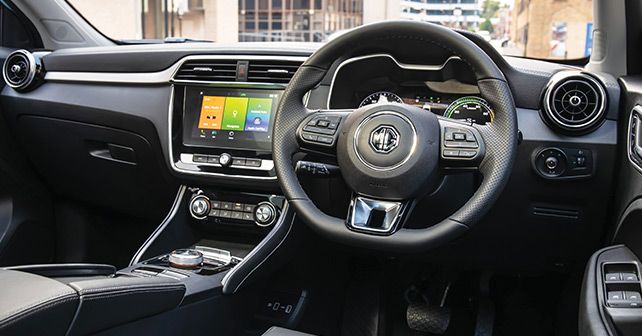
We travel to the largest electric vehicle market in the world, China, to get a first-hand look at MG’s next launch in India – the ZS EV. We also get a first-hand look at just what goes into the production of the battery packs that power these EVs.
The scale of Shanghai is simply staggering. Spread over 6,000 square-kilometres, and housing over 24 million people, it’s the world’s second-most populous city. Of course, with such size, and people, also come hundreds of thousands of vehicles. So, the government has stepped in to retain control – but we’ll come back to that later.
Our first stop was the MG plant, where we were given a small tour of the current product range from SAIC. To give you a bit of perspective, SAIC – the parent company of MG – is the single biggest manufacturer in China, with over 24% market share, in the biggest automotive market in the world.
Here, the highlight of the product range was the range-topping Marvel X, which is very luxurious, even though the interior styling is heavily inspired by the S-Class. The Marvel X offers a range of 405 kilometres on a single charge.
MG’s first EV for India
But, more importantly, while there, we go the chance to experience the MG ZS EV, which will be launched in the Indian market in December – with deliveries starting in January next year. Visually, the ZS is a well-styled car with good proportions. The design, more or less, is a cross between a raised hatchback and a crossover, something that won’t polarise opinions. The quality too feels competitive, both inside and out. And during our short time with the car, it felt quite sorted.
Driving on a short gymkhana-like course, the handling of the ZS seemed decent and the acceleration was quick – a given, considering its electric powertrain. Interestingly, to address common misconceptions about the usability of EVs, MG had also set up a water wading test. The ZS EV was taken through 40cm of standing water to showcase how it would deal with our flooded roads during the monsoon.
Of course, I would love to give you more information about the ZS EV, but, unfortunately, our test drive time was rather short. And, as regards to technical specifications, MG India is still working on the final spec of the car that they plan to bring to India. In Europe, however, the ZS EV features a 44.5kWh battery, which gives the car a range of 263 kilometres on a single charge in the WLTP test cycle.
Where the batteries meet the machine
The next day, we visited the CATL-SAIC Battery Plant in rural China, which was more interesting from an infrastructural perspective. Here, we got to witness the process of how modern batteries are manufactured. CATL is already the single largest manufacturer of EV batteries in the world, and in this brand-new high-tech facility, we saw the complete process of manufacturing – right from the raw material being converted into cells, and the cells being installed in a battery chassis, to making the entire battery pack of a car. Impressively, a large part of the manufacturing process is automated and is a delight to watch. Sadly, however, since it’s a new-age manufacturing plant, photography was strictly prohibited.
The more interesting aspects of why electric vehicles are so popular in China was explained to us by MG officials. About 15 years ago, the Chinese government felt that to maintain the air quality in their cities, a switch to electric vehicles was necessary. And to achieve that, they started working on creating the infrastructure for not only charging but also manufacturing EVs locally.
Naturally, this meant securing the main material for making the batteries – Lithium. Because of their foresight, China now controls over 50% of global Lithium reserves and has over 70% of the world’s battery manufacturing capacity.
Now, in cities like Shanghai, registration of internal combustion vehicles is done through a lottery system and costs about ₹8.5 lakh per car, whereas electric or strong hybrid vehicles can be registered for free, and there’s no quota limitation for them. Naturally, this has done wonders in making electric vehicles more appealing to Chinese buyers.
From an Indian perspective, while the ZS EV would be a good start and will offer customers more choices, not much is likely to happen in terms of electrification of the Indian automotive market unless the government takes concrete steps to form a forward-looking policy.
Until such a time, it all depends on discerning manufacturers like MG and Hyundai that offer EVs with the latest technology and battery capacity in India. But without a concrete policy encouraging the manufacturing of batteries in India, mass EV adoption will remain a pipe dream.
Also read - MG ZS EV unveiled, launch in January 2020

























Write your Comment